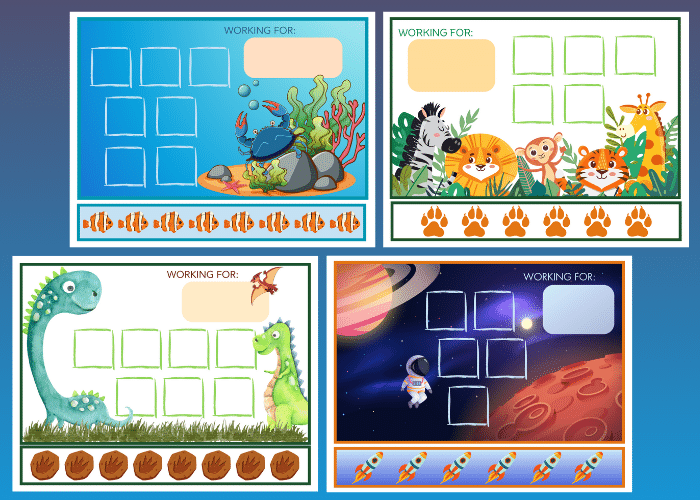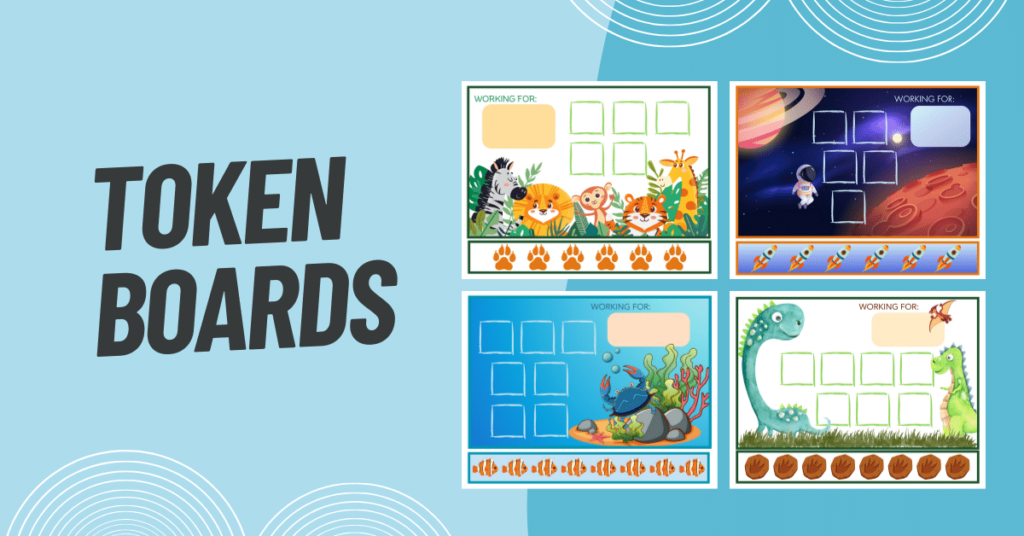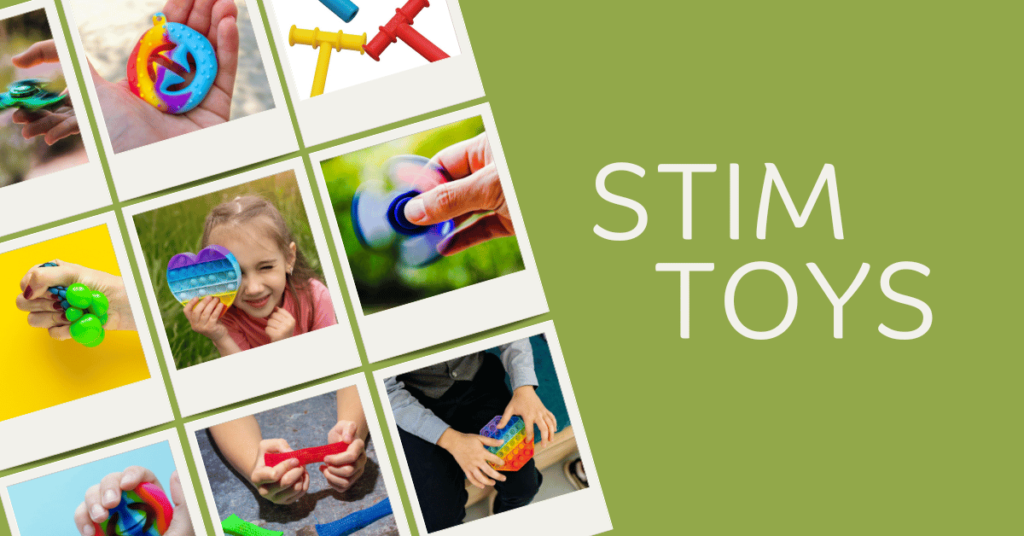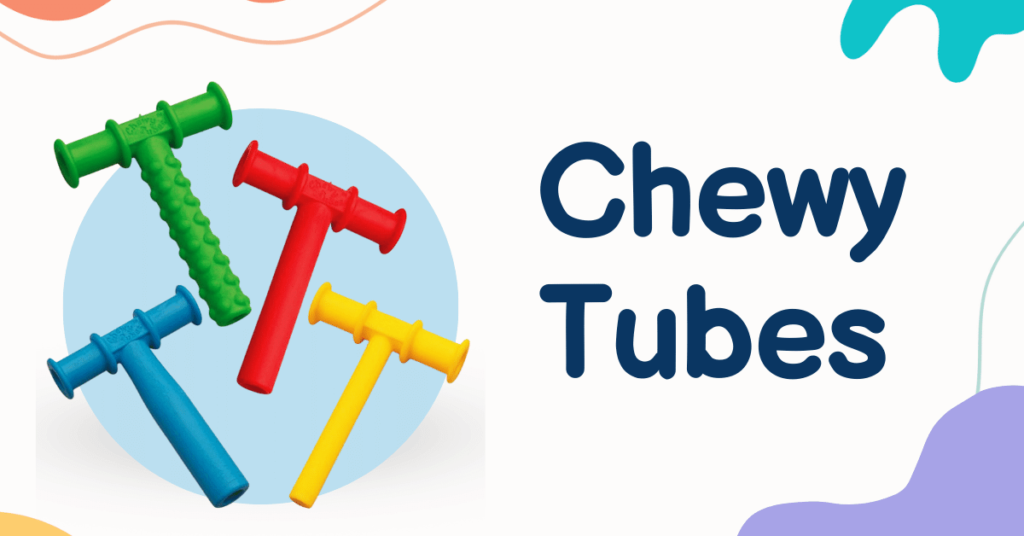Disclosure: This post may contain affiliate links. As an Amazon Associate, I earn from qualifying purchases. This means that if you click on a link and make a purchase, we may earn a commission at no additional cost to you. We only promote products we truly believe in, and your support helps us continue providing valuable content to our readers.
- I. Introduction
- II. What are Token Boards?
- III. Practical Steps for Implementing Your Token System
- Step 1: Defining the Target Behavior
- Step 2: Selecting the Ideal Tokens
- Step 3: Determining Token Values
- Step 4: Crafting the Token Board
- Step 5: Explaining the Token System.
- Step 6: Implementing the Token Board.
- Step 7: Monitoring Progress.
- Step 8: Rewarding Positive Behavior.
- Step 9: Adapting and Enhancing.
- IV. Benefits of Using Token Boards for Behavior Reinforcement
- V. Consistency and Patience: The Key to Success
- VI. Frequently Asked Questions
I. Introduction
Parenting for individuals with autism, ADHD, and other special needs is both rewarding and challenging. Effective behavior management is a critical aspect of helping these individuals thrive. One valuable tool in your arsenal is the token board. This article will walk you through creating a token board for behavior reinforcement. It is designed to make the journey as smooth as possible.
II. What are Token Boards?
Token boards are visual tools utilized in behavior management. It provides a structured method of rewarding and reinforcing positive behaviors. It is often used in individuals with special needs. The concept is simple. Tokens are earned for demonstrating desired behaviors. Individuals can then redeem tokens for rewards or privileges. It motivates individuals to continue displaying positive conduct.
III. Practical Steps for Implementing Your Token System
Step 1: Defining the Target Behavior
The first step is defining the specific behavior you want to encourage or reinforce. This behavior should be distinct, observable, and attainable. The clarity of your description is vital for the individual to comprehend what is expected. For instance, you might target behaviors like completing chores or using polite language. Or you might target behaviors like adhering to specific instructions or staying engaged during a particular task.
Step 2: Selecting the Ideal Tokens
Tokens serve as tangible or visual representations of progress toward earning a reward. Choosing tokens that are motivating and appealing to the individual is crucial. It can range from stickers and small toys to digital stars on a tablet. The key is ensuring that the chosen tokens resonate with the individual’s interests and preferences. Tailor your selection based on what genuinely motivates them.
Step 3: Determining Token Values
Tokens must have a clear value. Establishing how many tokens need to be earned before a reward is granted would be best. For example, one token is equivalent to 5 minutes of free time. It can also be equivalent to access to a beloved toy or a special treat. The value of tokens should be meaningful and enticing. It should serve as a powerful incentive for the individual to work towards their target behavior.
Step 4: Crafting the Token Board
A. Creating a Physical Token Board
Physical token boards are tangible. They are hands-on ways to reinforce positive behavior in individuals with autism, ADHD, and other special needs. Here are the steps to create a physical token board effectively:
- Gather Materials and Prepare the Base. Begin with a sturdy base for your physical token board. You can use materials such as a piece of cardboard, a poster board, a foam board, or even a magnetic board. The choice of material should be based on your preferences and the individual’s needs. Ensure the base is of sufficient size to accommodate all the necessary elements.
- Design the Layout. Divide the board into rows or columns, depending on the complexity of the tasks. It could also be depending on the time intervals you want to track. Each row or column should represent a specific task or time interval. Consider the individual’s needs and abilities when determining the layout. A simple row of tasks may suffice for some, while others may benefit from a more detailed grid layout.
- Visual Representation of Target Behavior. At the top of the board, attach a visual representation of the target behavior. It can be a picture, a written description, or a combination. Ensure that this representation is clear and engaging. It should serve as a constant reminder of the behavior the individual is working towards. For example, if the target behavior is completing homework, attach a picture of a child doing homework. You may also opt for a written description such as “Finish Homework.”
- Tokens and Fasteners. Utilize Velcro or adhesive-backed hook-and-loop fasteners to attach the tokens to the board. Tokens can be physical objects like stickers, buttons, or small magnets. Ensure that the tokens are easily attachable and removable. It allows the individual to see their progress. It also gives individuals immediate reinforcement when earning tokens. The choice of tokens should align with the individual’s preferences and motivations.
- Spaces for Earned Tokens and Rewards. Dedicate distinct spaces on the board for earned tokens. And so, with the rewards, the individual can work towards. These spaces can be illustrated with pictures or a description of the desired prize. The prizes should be meaningful and motivating. It should provide a clear incentive for the individual to engage in the target behavior. For example, if the reward is playtime, you can include a picture of a favorite toy in the rewards section.
- Setting Up the System. Once the physical token board is constructed, explaining the system to the individual is essential. Clarify how tokens are earned and where they should be placed. Explain how they can work towards getting rewards. Use positive and encouraging language. Reinforce the connection between positive behavior and the acquisition of tokens.

Download Token Boards Template
You can also opt to purchase a Ready-to-Use Customizable Token Board available online.
Physical token boards offer a tactile and interactive approach to behavior management. It makes progress visible and tangible for the individual. These boards can be especially effective for those who respond well to hands-on methods. It also provides sensory experience from attaching and removing tokens. Additionally, physical token boards are portable. It allows them to be used in various settings to maintain consistency in behavior management.
B. Creating a Digital Token Board
Digital token boards offer enhanced flexibility and customization. It makes them an excellent choice for more tech-savvy individuals. They are also great for individuals motivated by digital interactions. Here’s a detailed breakdown of how to create and implement a digital token board:
- Choose the Right Software or App. To create a digital token board, select the most suitable software or app for behavior management. There are several options available, each offering various features and functionalities. Finding one that matches the specific needs of the individual you are working with is essential. Consider factors such as user-friendliness and visual appeal. Take into consideration compatibility with the individual’s device.
- Customize Your Digital Token Board. Once you’ve chosen the software or app, it’s time to customize the digital token board. You need to align with the individual’s goals and preferences. Here’s how to do it:
- Select Visual Elements. Choose visual elements that represent the target behavior and the desired rewards, such as icons, images, or symbols. These visual cues should be clear and engaging. It should make it easy for the individual to understand and relate to the content.
- Design Layout. Arrange the visual elements on the digital board in an organized and intuitive manner. Consider using a grid layout, each cell representing a task or a specific time interval. Ensure the target behavior is prominently displayed at the top of the board.
- Token Appearance. Customize the appearance of the digital tokens. You can use digital stickers or stars. Use any graphics that the individual finds appealing. The tokens should be visually distinct and appealing. It should motivate the individual to earn them.
- Configure Token Values and Reward System. The digital token board app will allow you to configure the token values and reward system. Here’s how to set these parameters effectively:
- Token Values. Assign a clear value to each token. Determine how many tokens must be earned before a reward is granted. For example, one token is equivalent to 10 minutes of playtime. It can be equivalent to a specific item the individual desires.
- Reward System. Define the rewards that the individual can work towards. These rewards should be meaningful and motivating. You can include short-term bonuses (e.g., a small treat) and long-term rewards (e.g., a favorite toy or a special outing). Ensure that the Prizes align with the individual’s preferences.
- Progress Tracking. Most digital token board software allows for tracking the individual’s progress. Configure the software to record the number of tokens earned over time. This feature provides an excellent way to monitor the individual’s behavior. You can also adjust the system if necessary.
Following these steps, you can create a digital token board tailored to the individual’s needs. It also maximizes the benefits of using technology to reinforce positive behavior. Digital token boards offer the advantage of portability, easy updates, and interactive engagement. It makes them a valuable addition to your behavior management toolkit.
Step 5: Explaining the Token System.
With your token board ready, ensure the individual comprehends how the system operates. Use straightforward and concise language. Explain the purpose of the token board, how tokens are earned, and the rewards they can work towards. Visual aids, such as a social story or a visual schedule, can enhance understanding.
Step 6: Implementing the Token Board.
With the token board in place and the individual informed about its purpose, it’s time to commence its use. When the individual displays the desired behavior, promptly and consistently reward them with tokens. Reinforce their positive conduct with statements like, “You’re doing an excellent job following instructions—here’s a token!”
Step 7: Monitoring Progress.
Tracking the number of tokens earned over time is crucial. You can accomplish this by maintaining a separate tracking sheet. You may also utilize a digital record to monitor progress consistently. Regular monitoring will help you assess the individual’s performance. It can help you identify whether any adjustments are necessary.
Step 8: Rewarding Positive Behavior.
Once the individual has amassed a predetermined number of tokens, it’s time to enable them to exchange them for the predetermined reward. This step serves as a potent motivator. It reinforces the connection between positive behavior and the receipt of a prize.
Step 9: Adapting and Enhancing.
Behavior can change and evolve. It necessitates a periodic review of the token board’s effectiveness. If adjustments are necessary, modify the behavior goal, token value, or reward system. You need to align with the individual’s progress and evolving needs.
IV. Benefits of Using Token Boards for Behavior Reinforcement
Token boards have proven to be a powerful tool in behavior management for individuals with special needs. Let’s explore some of the key benefits of using token boards:
- Clear and Visual Reinforcement. Token boards provide a clear and visual way to reinforce positive behavior. They offer a tangible representation of progress. It makes it easier for individuals to understand the relationship between their actions and rewards.
- Motivation and Incentives. Tokens serve as motivating incentives for individuals. By earning tokens for desired behaviors, they are more likely to engage in those behaviors consistently in the hope of receiving rewards they value.
- Customization. Parents can customize token boards to fit their child’s specific needs and preferences. This flexibility allows parents to tailor it to individual interests and motivations.
- Immediate Feedback. Token boards offer immediate feedback. When a positive behavior is displayed, tokens are given right away. This immediate feedback provides instant reinforcement. It is highly effective in reinforcing desired behaviors.
- Goal Setting and Achievement. Setting specific goals for earning tokens promotes a sense of achievement. Individuals can see their progress and work towards accomplishing their goals. It helps boost their self-esteem and confidence.
- Structure and Routine. Token boards introduce structure and routine into an individual’s daily life. They create predictability and help individuals understand what is expected of them. It helps in reducing anxiety and promoting a sense of security.
- Transferable Skills. The skills learned through token boards can be transferable to other areas of an individual’s life, such as goal setting, self-regulation, and delayed gratification. It improves their overall adaptability and self-control.
- Communication Enhancement. Token boards can also aid in communication. By visually representing expectations and rewards, individuals may become more motivated to communicate their desires and needs effectively.
- Positive Reinforcement. The focus of token boards is on positive reinforcement rather than punishment. This approach emphasizes rewarding and promoting desired behaviors. It can be more effective and emotionally beneficial than punitive measures.
- Collaboration and Consistency. Token boards provide a framework for collaboration between parents, caregivers, educators, and therapists. When all parties use a consistent approach, it enhances the effectiveness of the behavior management strategy.
Parents and caregivers can leverage these benefits by incorporating token boards into behavior management plans to promote positive behavior. It increases motivation and provides a supportive and structured environment for individuals with special needs. While it may take time and effort to establish and maintain, the rewards reaped from token boards are worth the investment.
V. Consistency and Patience: The Key to Success
The consistent and patient application of the token board system is essential to its success. By reinforcing positive behaviors consistently over time and exercising patience, you foster lasting change. As you reflect on the progress achieved through your implemented token board, the earned tokens and received rewards stand as tangible evidence of the individual’s growth. They serve as a clear testament to their development in effectively managing their behavior.
VI. Frequently Asked Questions
How often should I update the token board’s target behavior?
The frequency of updates depends on the individual’s progress. If the target behavior becomes manageable, it may be time to set new goals and challenges.
Are token boards only for children or individuals with autism and ADHD?
Token boards can be helpful in behavior management in various settings. It can be useful for individuals with different needs. They are flexible tools and can be customized for various situations.
What age is appropriate for using token boards?
Token boards can be adapted for individuals of various ages. They can be effective for children as young as preschool and continue to be useful throughout adolescence and adulthood.
How long should I use a token board for behavior management?
The duration of using a token board varies based on individual needs. Some individuals may require ongoing use. Others might transition to different strategies as their behavior improves. Regularly assess progress. Consult with professionals for guidance on when to make changes.
Can I combine a token board with other behavior management techniques?
Yes, you can integrate token boards with other strategies. You can integrate them with social stories, visual schedules, and positive reinforcement techniques. Combining approaches can enhance the effectiveness of behavior management.
How can I handle token board-related meltdowns or challenges?
Token boards may occasionally lead to frustration or meltdowns. Suppose the individual does not earn tokens as expected. It’s crucial to stay calm and supportive. You can adjust the system or seek professional guidance to address challenging behaviors.
What are some common mistakes to avoid when using token boards?
Common mistakes include not selecting motivating tokens and setting unrealistic goals. It also includes inconsistent use of the system and not adjusting the token board as needed. Regularly evaluate the system and adapt it to the individual’s progress.
What if the individual loses interest in the token board over time?
It’s not uncommon for interest to wane after a while. To address this, periodically update the token board. Update it with new visuals, tokens, or rewards to keep the system fresh and engaging.
Can token boards help with reducing challenging behaviors or tantrums?
Token boards are primarily designed to reinforce positive behaviors. They may indirectly help reduce challenging behaviors by encouraging positive ones. However, addressing problematic behaviors often requires a comprehensive behavior intervention plan. This plan is developed with the guidance of professionals.



